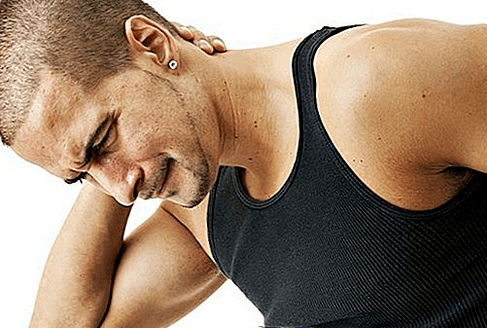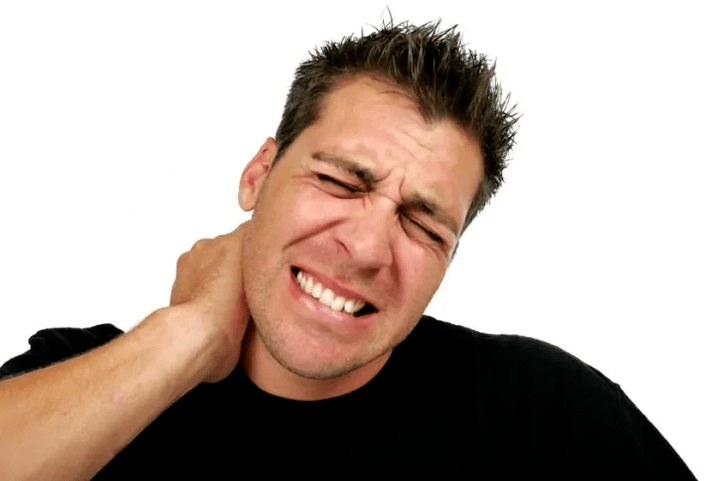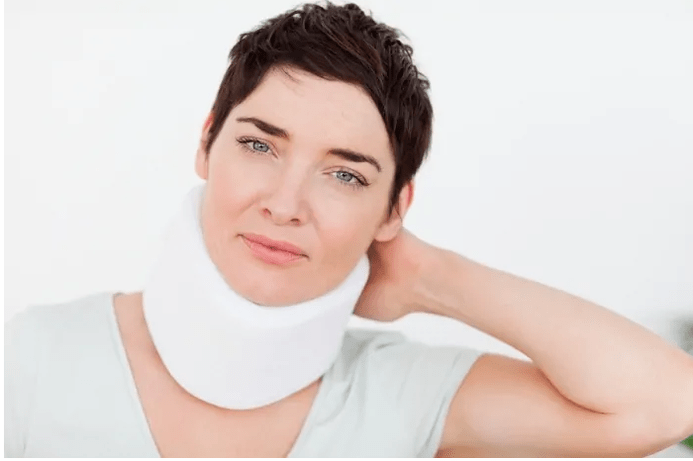Osteochondrosis is most commonly observed in the cervical spine, due to the anatomical characteristics of the department's structure. First of all, the cervical spines are very close to each other. Secondly, the muscle frame of the neck is dysplasia. It is precisely for these reasons that the cervical spine and nerve roots are compressed, and the lower cervical spine is more common than the upper part.

Cimptom of cervical bone and chondropathy
The clinical symptoms of cervical osteochondrosis are extremely diverse. Many people don't even suggest that various symptoms (pain in their hands, dizziness, etc. ) may be related to the pathology of the neck. Generally, all the symptoms of cervical osteochondrosis can be considered in three syndromes:
- Compression brown syndrome;
- stimulating reflex syndrome;
- Driven arterial syndrome.
Compression - Shell Syndrome
In the context of cervical vertebrae disease, vertebral hernia and bone plants can be formed. These structures compress the nerve roots, which lead to symptoms of radiation inflammation. Compression of each spine is associated with specific reflexes, movements, and sensitive diseases:
- When the spine of C1 is compressed, pain and impaired sensitivity (reduced sensitivity, numbness, tingling skin, and sensation of chicken skin);
- When the spine of C2 is compressed, the pain develops and sensitivity changes in the top of the head and the consumption area;
- When compressing the spine of C3, pain is noticed, as well as changes in neck sensitivity. Additionally, a person may be disturbed by the feeling of swelling of his tongue, difficulty of speech, and speech disorders.
- When the S4 spine is compressed, pain is noticed, as well as changes in clavicle sensitivity. ICOTE, irritability may occur. Because the fibers of the vertebral nerve pass through the spine, the spine compresses, breathes, and heart pain can occur.
- When compressing the spine of C5, the pain in the shoulder and changes in skin sensitivity on the outer surface of the shoulder.
- When compressing the span of C6, the pain runs from the neck to the shoulder blade and the outer surface of the shoulder, the forearm and the thumb of the brush. Noted that this area violates skin sensitivity. Both muscles are exaggerated and the reflexes are reduced.
- When compressing the spine of C7, the pain in the neck spreads below the shoulder blade, to the II-II fingers of the shoulder surface, forearm and hands. Noted that this area violates skin sensitivity. The muscles on the three heads were exaggerated and the reflexes were reduced.
- When the spine of C8 is compressed, the pain in the neck reaches to the little finger. Skin sensitivity in this area is disturbed. Reflexes of three head muscles decreased and decreased.
For radiation syndrome, acute pain and its enhancement when moving the head are characterized.
Stimulating reflex syndrome
The early stages of osteochondrosis are characterized by the occurrence of reflex syndrome. For cervical osteochondrosis, the following reflex syndrome options may occur:
- Cervical pain is a severe pain in the neck that is expressed as much as possible when waking up in the morning and turning to the head, coughing or even laughing.
- Cervical cancer - Pain is concentrated on the neck and the back of the neck.
- Cervical nucleic acid - pain in the neck, shoulders and forearms.
Muscle tone, nutrition - manifestations of vascular and neurotrophic malnutrition may occur with cervical nucleic acid. Muscle tonic syndrome is the result of reflex muscle spasms. Distinguish the following muscle tone syndromes:
- Syndrome of lower oblique muscles - manifests as persistent pain in the neck and back of the head, pain on one side, which is significantly strengthened when the head turns.
- Shovel Reflex Syndrome - Human Catastrophe, shoulder cap bones, lateral surface pain, pain pain in the shoulder and even chest. One feature is the increase in pain in the spiral spiral of the brush that opens on the lower back.
Neurodystrophic syndrome includes the periosteum of the shoulder cap bone, the shoulder spic bone, and the shoulder-Ward syndrome. Shoulder - Shoulder bone circumference - is characterized by shoulder pain that exacerbates or raises hands during shoulder movement. The pain will radiate to the arms and neck. Swelling of the skin in the shoulder joint. For shoulder syndrome, there is a sign of Periarroz that is characterized by the combination of nutrition-nutrition, nutritional changes in the wrist joint and brush. The skin of the brush becomes edema, its color changes and local temperature increases. The shoulders are changes in neurotrophic dystrophy of the shoulder rod, replacing the attachment of many muscles. It is manifested by pain and soreness in the pole area, exacerbating it in the implementation of sudden movement on the elbow or brush.

Driven arterial syndrome
The vertebral artery occurs in the channels formed by the cervical vertebrae. This blood vessel provides a blood supply to many brain structures. Due to its reflex spasm and mechanical compression, narrowing of the container may be both possible. Syndrome that forms vertebral artery when blood vessels are shrinking is characterized by the following symptoms:
- Skull: Pain, persistent headaches are more common in one aspect, significantly enhanced with head movement. Pain spreads from the back of the forehead.
- The soreness of the scalp can be confirmed by touching it even when combing your hair.
- Kohleovestilarnyi violation: manifested by dizziness, tinnitus (ears ringing), mild decline and a violation of balance.
- Visual impairment: Darkness, flickering flies in front of my eyes.
- Neurotic syndrome: irritability, emotional instability, sleep disorders.
- Nutritional symptoms: calories, chills, and hands cooling.
- Blood pressure fluctuations.
- As the vertebral artery compresses caused by a sharp turn of the head, a person may lose consciousness. This option is also possible: a person falls, and is conscious at the same time. This violation is called a landing attack.
Treatment of cervical bone and chondropathy
Fighting osteochondral toxin in late form is very difficult. Various drugs are used to eliminate symptoms of the disease. The important role of massage in therapeutic gymnastics and physical therapy is equally important. In some cases, wearing a special collar is very useful. Folk therapy will help supplement treatments.
Wearing a cervical collar
Wearing a collar helps relieve muscle tension in the neck and provides the right place for the spine, eliminating compression in the vertebral artery and nerve roots. Cervical collar stiff (Shantsa collar) and inflatable. Shanz Collar is a dense frame that is fixed to the neck. He took on all the seriousness of the head, thus relaxing the tension muscles in his neck. An inflatable collar is a device that needs to be placed on the neck and then pumps air with the help of attached pears. The swelling collar pulled the spine. The collar is not worn all day, but for several hours a day. On average, the length of the device is one month. Please note: The need for collar use is determined by the doctor. In any case, there is no one alone without a doctor's prescription. In some cases, the collar can hinder the ship and nerves, which can have serious consequences.
Exercise of cervical bone and chondropathy

It is recommended that all patients with osteochondrosis undergo treatment of gymnastics without contraindications. The manifestations of physical exercise during the aggravation of the disease are taboo. The treatment gymnastics can be completed after the pain is relieved. Regular exercises can strengthen the muscle frame and reduce the load on the disc. Regular physical activities help improve blood supply to the neck and lead to normal metabolic processes that occur in the intervertebral disc. About one group of exercises for cervical osteochondrosis:
- Sit on a chair. Turn your head to the left and right.
- Tilt your head and touch your chest to have epilepsy seizures.
- Pull your neck back while your chin.
- Resistance is important by placing your palm on your forehead and pressing it while tilting your head forward.
- The palm must or must be fixed to the temple and absolutely, like in previous practice, use hand resistance to the movement of the head.
- Lift your shoulders as much as possible and count to ten. Then lower your shoulders and relax. After ten seconds, perform the same operation.
All exercises must be repeated ten times.

























